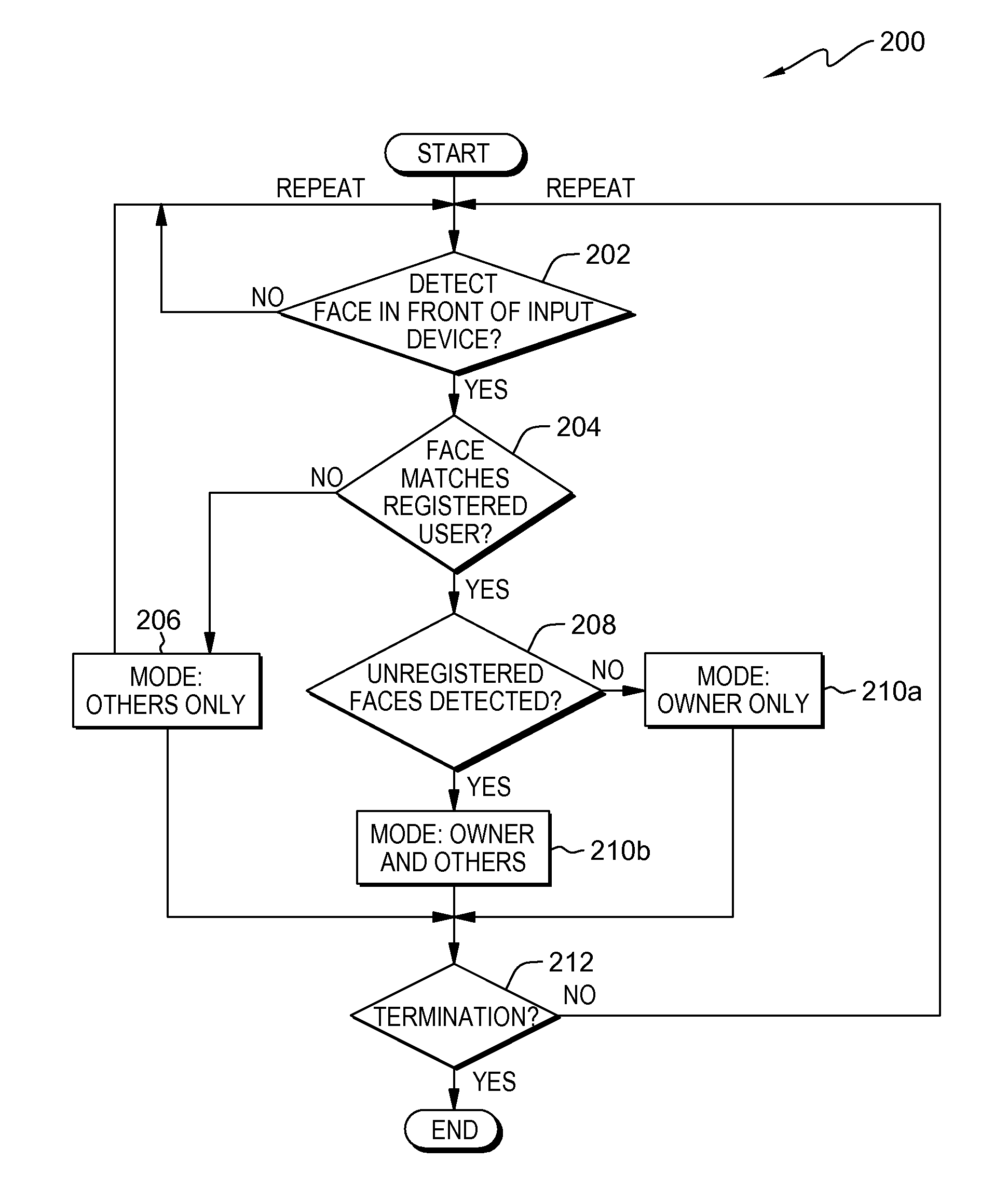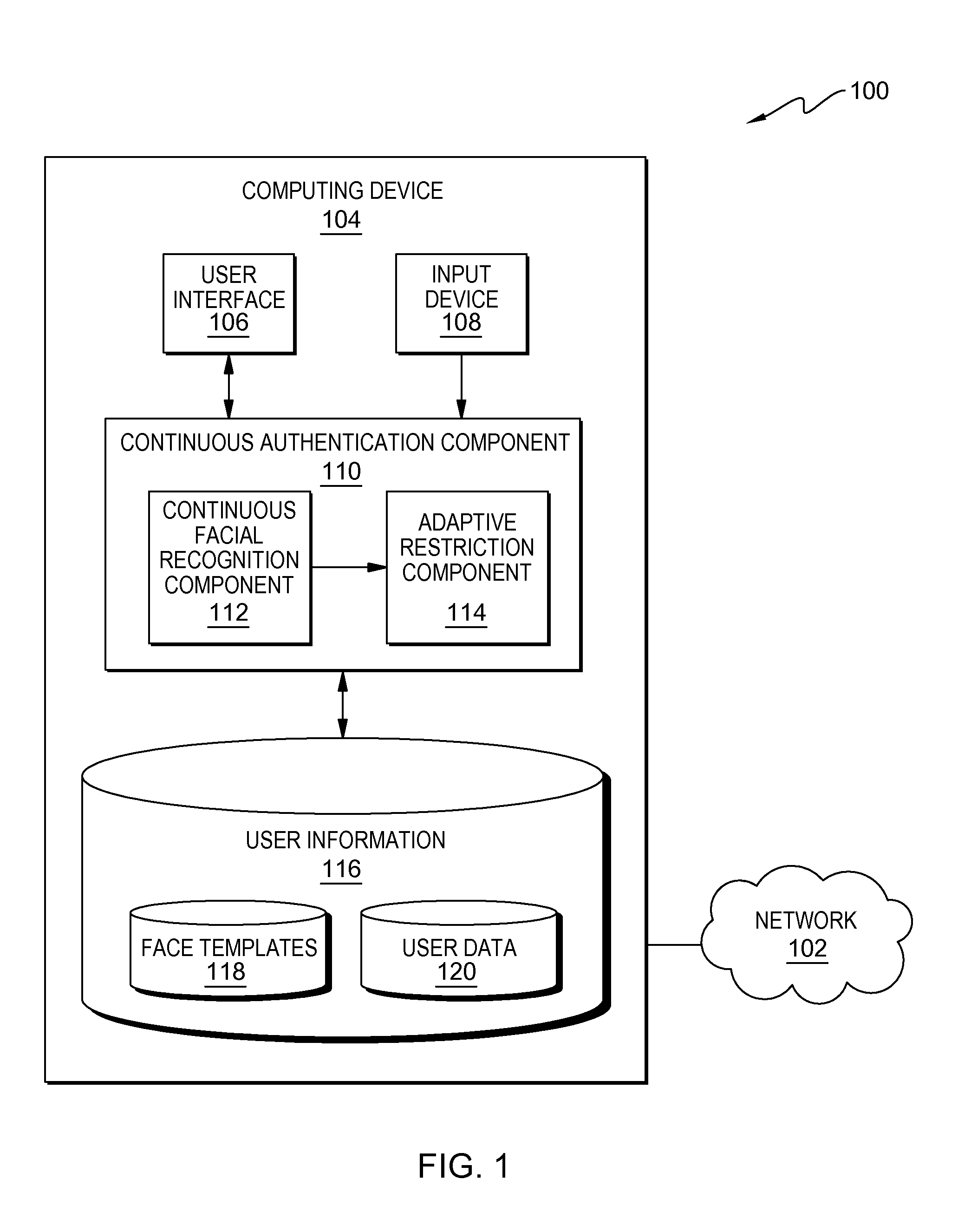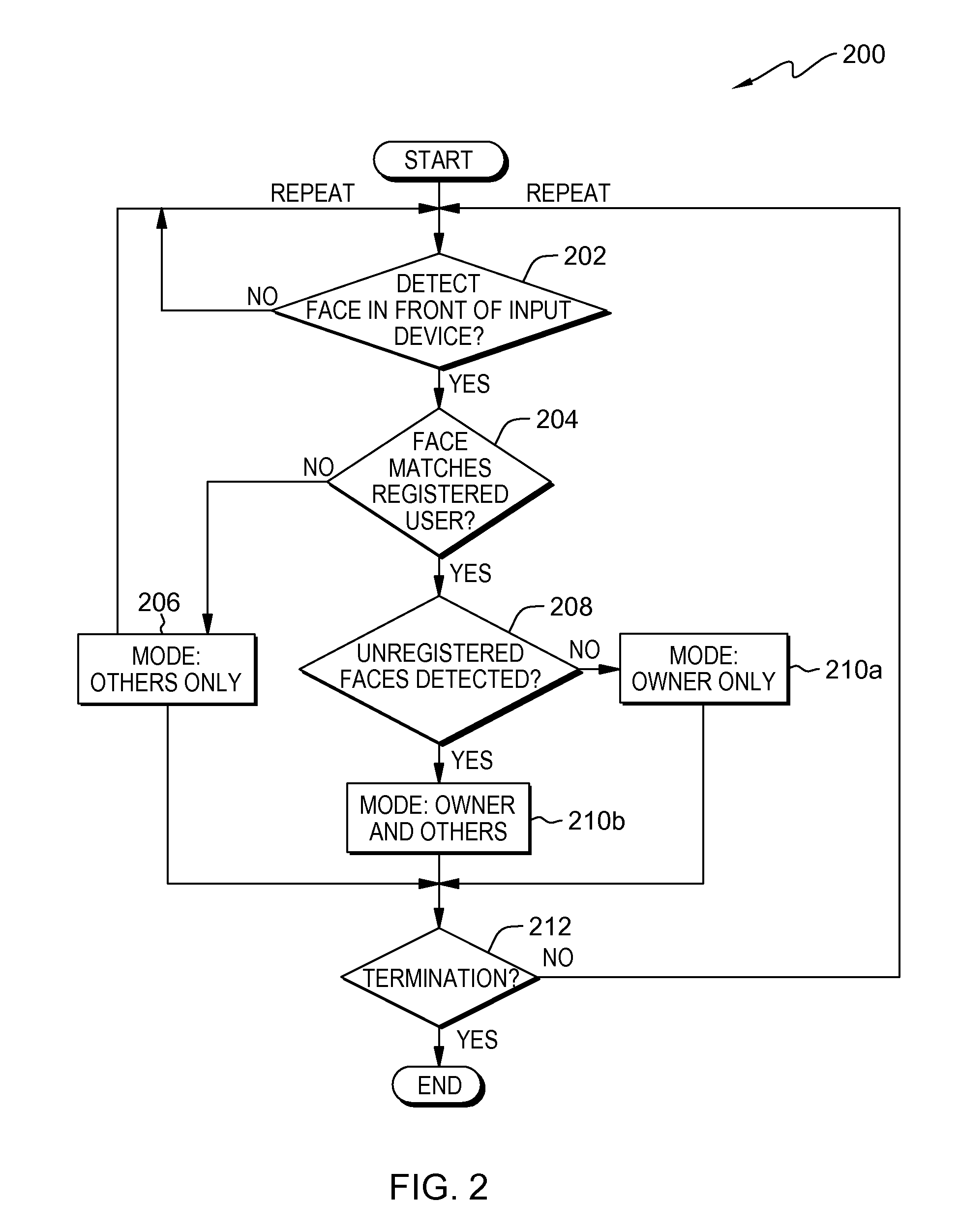Continuous facial recognition for adaptive data restriction
a data restriction and facial recognition technology, applied in the field of computer device security, can solve the problems of social awkward situations, negative consequences of inadvertent disclosure to individuals other than the owner of the device, and achieve the effect of restricting access to data
- Summary
- Abstract
- Description
- Claims
- Application Information
AI Technical Summary
Benefits of technology
Problems solved by technology
Method used
Image
Examples
Embodiment Construction
[0011]Embodiments described herein respond to the challenges of preventing inadvertent disclosure of private data when using a computing device in the presence of others. Existing approaches to restricting access to data stored on a device do not always rise to the level of practicality or subtlety that would prevent embarrassment or other harm to the owner of the device in an unpredictable situation (e.g., in the case of casual sharing or use in a public place). Approaches disclosed in the prior art can inconvenience users or compromise some measure of privacy by, for example:[0012](1) requiring that a registered user log out in order to restrict third party access,[0013](2) alerting third parties to sensitive data stored on the device by overtly changing access levels in a their presence (e.g., requiring that the third party register or log into a separate account),[0014](3) completely locking the device when the device owner is not detected, or[0015](4) remaining fully accessible...
PUM
 Login to View More
Login to View More Abstract
Description
Claims
Application Information
 Login to View More
Login to View More - R&D
- Intellectual Property
- Life Sciences
- Materials
- Tech Scout
- Unparalleled Data Quality
- Higher Quality Content
- 60% Fewer Hallucinations
Browse by: Latest US Patents, China's latest patents, Technical Efficacy Thesaurus, Application Domain, Technology Topic, Popular Technical Reports.
© 2025 PatSnap. All rights reserved.Legal|Privacy policy|Modern Slavery Act Transparency Statement|Sitemap|About US| Contact US: help@patsnap.com



